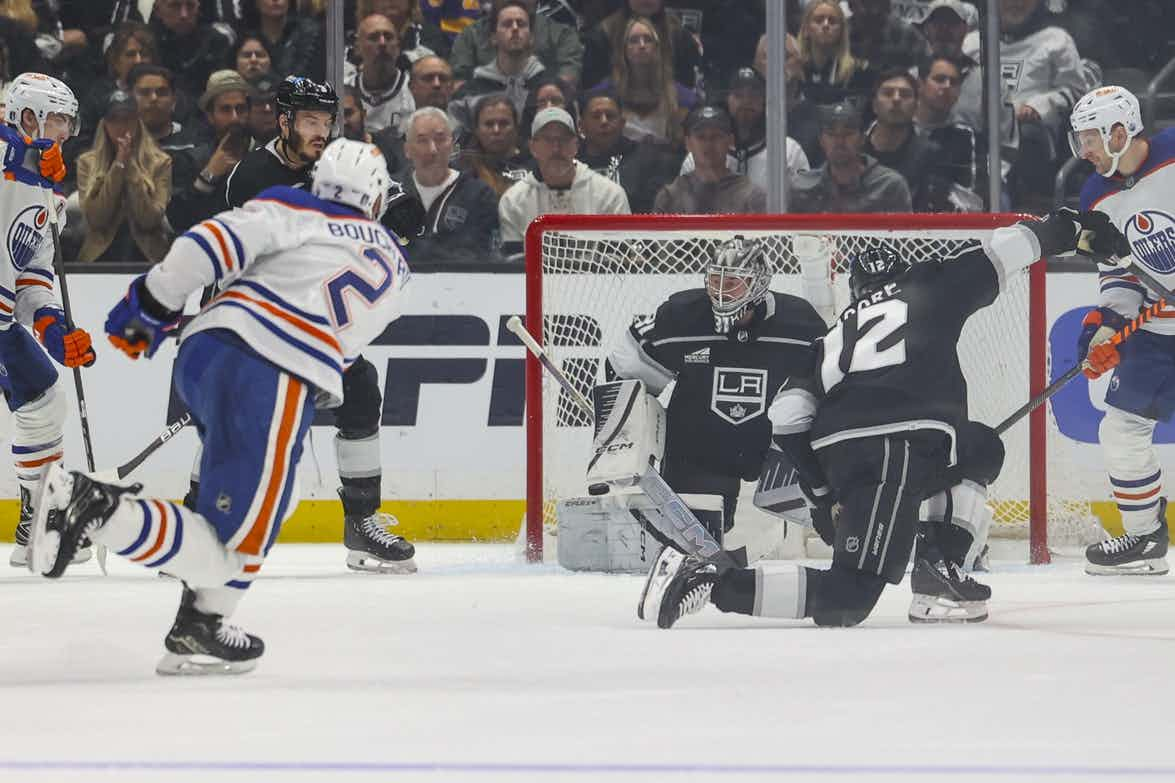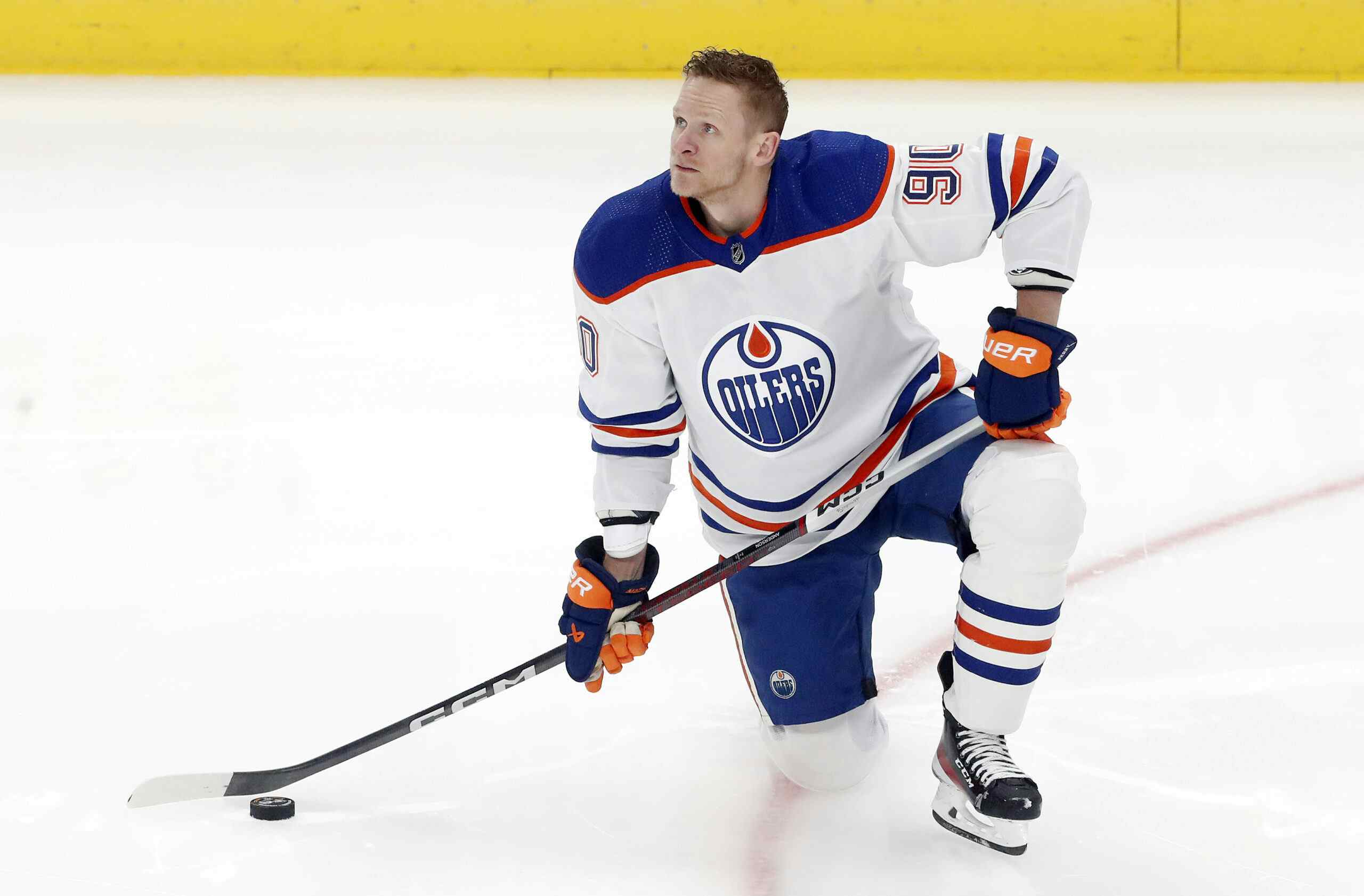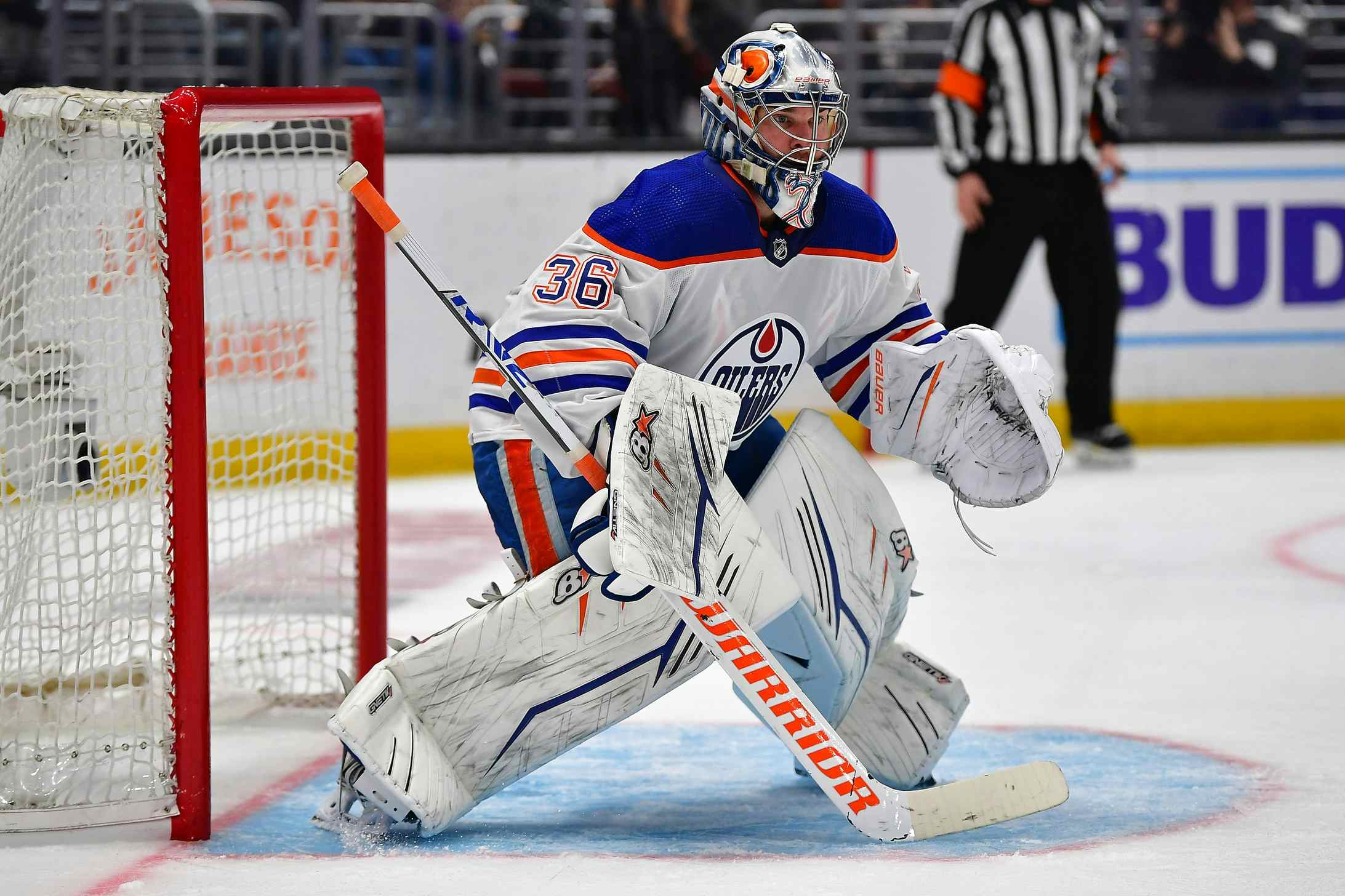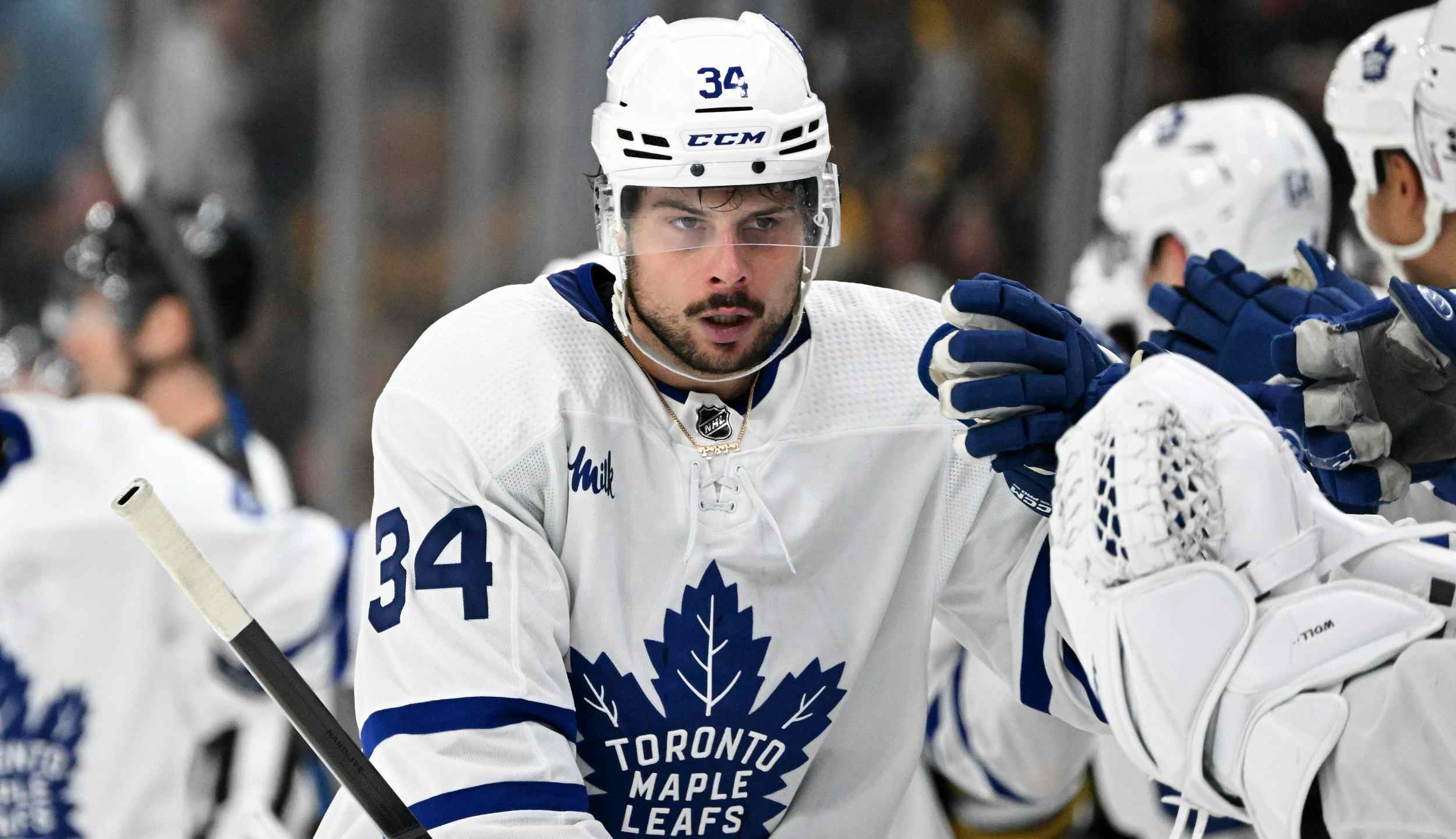Evaluating the Oklahoma City Barons

For the first four months of the season, many of the players the Oilers will count on in the majors this season – and all of the guys they will count on to fill in for injuries and slumps – have played in Oklahoma. It’s a mix of brilliant, surprising (for good and bad) and uninspiring, and a lot of individuals have moved up or down the depth chart in four short months.
Forwards

Jordan Eberle: 34GP – 25G – 26A – 51PTS. A dominant force, almost without question the AHL’s best forward at the time of his recall. He was scoring even-strength goals every other game and AHL defense corps were powerless to stop him. Despite his reputation, he continued to showcase an uncanny ability to walk right into danger areas before the other team clued in, and once there his superb shot did the rest.
Taylor Hall: 26GP – 14G – 20A – 34PTS. It took Hall a while to find his form. He opened the season with a bang, scoring a goal and obliterating Jonas Brodin with a hard check, but even so he was nowhere near 100% out of the gate. His offensive production over his first two weeks with the club was good but not Taylor Hall good; he wasn’t controlling the play the way he would later on. Over his final 20 games, however, Hall was spectacular – converting on the power play, leading rushes at even-strength, showing a playmaker’s vision – he was a near-perfect offensive weapon.

Ryan Nugent-Hopkins: 19GP – 8G – 12A – 20PTS. A maestro on the power play, but surprisingly lacking elsewhere. He was prone to being shutdown at even-strength – particularly on the road where Todd Nelson had less control over matchups – and simply wasn’t at the same level as his two Oilers teammates. A trio of comparisons will shine the areas he struggled into sharp relief:
- Ryan Nugent-Hopkins in home games: 9GP – 7G – 9A – 16PTS (1.78 points/game)
- Ryan Nugent-Hopkins in road games: 10GP – 1G – 3A – 4PTS (0.40 points/game)
Some of that is the vagaries of shooting percentage – Nugent-Hopkins’ shot rate was only slightly down for the road games – but some of it shows his legitimate difficulties.
- Ryan Nugent-Hopkins on the power play: 19GP – 3G – 9A – 12PTS (0.63 points/game)
- Ryan Nugent-Hopkins at even-strength: 19GP – 5G – 3A – 8PTS (0.42 points/game)
- Ryan Nugent-Hopkins as top-line centre: 19GP – 8G – 12A – 20PTS (1.05 points/game)
- Mark Arcobello as top-line centre: 14GP – 3G – 17A – 20PTS (1.43 points/game)
At this point, Nugent-Hopkins is a brilliant player in a lot of ways at the AHL level – his vision on the power play, for example, was likely the best in the league – but as a top-line even-strength centre he wasn’t as dominant as one would expect a top-line NHL player to be.
Teemu Hartikainen: 37GP – 11G – 16A – 27PTS. Hartikainen is ahead of Magnus Paajarvi on the depth chart mostly because he plays a tougher game. That’s not a knock on Paajarvi, who eats Hartikainen’s lunch at things like getting the puck to the offensive zone, but rather a simple acknowledgement that from the blue line in Hartikainen’s ability to cycle the puck and grind things out along the boards is excellent, both at even-strength and on the power play. Fans expecting him to run around belting things will be disappointed (unless, of course, the coach tells him not to worry about the offense and run around belting things), because that’s not the player he is – he can and does hit, but mostly he’s just a guy who does a great job hanging on to the puck in the offensive zone and doesn’t seem to lose many battles (at the AHL level at least) along the boards. He was also an effective net-front presence on the power play in Oklahoma. Watching him play, he struck me as the perfect guy to play with the Sedin twins – because while his play in other areas is not bad, he really shines when he gets a chance to play a puck-possession game in the offensive zone.
Magnus Paajarvi: 37GP – 4G – 16A – 20PTS. Paajarvi has gotten a bit more willing to take the puck to the net or throw a hit, and he’s also shown he can handle penalty-killing work in the minors, but other than that he’s largely the same player he was when he left Edmonton. His strengths are the same – he can skate like the wind, he advances the puck as well as anyone, he cheats to defense and doesn’t generally get burned, and he has the vision of a playmaker. His big weakness remains the same, too: he just doesn’t play like an NHL goal-scorer. I have all kinds of time for this player and think he’s the best guy in the organization to play on the wing of, say, a Smyth-Horcoff third line.
Mark Arcobello: 36GP – 10G – 22A – 32PTS. For most of the veteran AHL types in the minors this year, the arrival of NHL stars meant a reduction in ice-time and difficulty impressing. Arcobello did have to struggle through erratic ice-time at points, but there’s no question he impressed. When Ryan Nugent-Hopkins was in the lineup, Arcobello was one of the few reliable secondary scorers on the team; when Nugent-Hopkins left for the World Juniors Arcobello took his spot and arguably outperformed him. Arcobello did everything he could to stand out, but his career prospects continue to be defined by a single number: 5’9".

Chris VandeVelde: 31GP – 1G – 8A – 9PTS. VandeVelde was Todd Nelson’s favourite player for defensive work at both even-strength and on the penalty kill. He has decent size and strength, wins faceoffs, finishes checks, and most importantly defends well. The problem is that he’s not an offensive player: even allowing for his role, he just doesn’t score enough. A useful ‘tweener because he’s a plug-and-play fourth-liner when recalled.

Anton Lander: 34GP – 3G – 5A – 8PTS. Lander will make the NHL as a defensive specialist or not at all. Lander struggled early but after being put on the ‘Nordic Line’ with Magnus Paajarvi and Teemu Hartikainen he started to find the range – scoring a little bit but mostly just doing a good job of keeping the scoring chances of the opposition down. Todd Nelson liked using this trio for the opening faceoffs of periods and had no compunctions about tossing them to the wolves at times, and they fared pretty well. Lander’s young enough that there’s hope he could turn into a Samuel Pahlsson type player, but he’s not there yet.

The rest. Team captain Josh Green (on an AHL-only contract) is probably the best forward not listed but was badly slowed by an injury early in the season. Dane Byers was a disappointment – he fits a fourth line role because he hits and fights but he’s limited otherwise. Antti Tyrvainen, prior to injury, revealed himself to be a filthy little Finn with virtually no boundaries, both irritating the opposition and all too often handing them a power play at the same time. Tyler Pitlick has power forward-type attributes but in some ways is the inverse of Jordan Eberle in that he seems to always shoot just before he gets to danger areas; his game is rough at this point and he desperately needs to find some offense. Curtis Hamilton is a generic checking-line forward at this point; he has good defensive instincts but lacks the nastiness/firepower to really get noticed. Ryan Martindale was hurt often, but when playing he was a mess as a defensive player and doesn’t have nearly enough offense to make up the difference. Toni Rajala’s tiny but talented, the appeal of Kristians Pelss is obvious but smallish energy guys with minimal offense rarely have careers, and Philippe Cornet was invisible while the NHL’ers were there. Tanner House has good points but his age (he turns 27 in April) means that he’ll be lucky if he gets a cameo on an NHL fourth-line.
The Defence

Justin Schultz: 34GP – 18G – 30A – 48PTS. This guy is brilliant. As a power play point man, he’s the best player on the Oilers right now and he’s going to make some noise. His vision – both clearing his own end and distributing the puck in the offensive zone – is high-end, and he has a vicious wrist shot that he must have stolen from a goal-scoring forward somewhere along the line. Defensively, he’s not nearly as bad as his reputation; the problem was that a) his gaffes tended to be highly noticeable and b) his defensive partners were either trainwrecks or ECHL call-ups. With all due respect to Nathan Deck, who impressed in his own right, a guy like Nick Schultz covers for a lot more sins. With that said, Schultz does have defensive weaknesses – primarily the near-total absence of a physical game – and at this point is not a complete defender. But as an offensive option he’s off-the-charts good.

Colten Teubert: 36GP – 2G – 3A – 5PTS. Colten Teubert did himself a lot of favours by filling the enforcer role: he’s tough, he’s mean, and he don’t take no crap off nobody.
The problem is that at the AHL level, he didn’t really impress as a shut-down defender; in Oklahoma he looked a lot like a passable second-pairing guy. Is a passable second-pairing guy in a lockout-strengthened AHL good enough for third-pairing NHL work?

Taylor Fedun: 35GP – 2G – 7A – 9PTS. The fact that Fedun’s contributing in the AHL and in the mix for an NHL call-up after the injury he suffered is remarkable. He’s smart, pretty good defensively, and his skating has come along since the start of the year. He’s a good puck-mover, and somewhat sub-average in terms of strength in front of the net. I’m optimistic that he’ll continue to improve and wouldn’t be surprised if he received an NHL recall at some point this season.

Martin Marincin: 33GP – 3G – 10A – 13PTS. There is everything to like in Martin Marincin. He’s a strong skater, a good puck distributor, big and strong (if not overly physical) – as far as physical tools go, there’s not much he doesn’t have. As a whole package, though, at this point in his career he’s lacking. He’s prone to brutal giveaways and soft plays in his own end; in short, he’s a project and this is going to take a while. There’s also some question of whether sub-par English skills are making it difficult for the coaches to work with him the way they do with other players.
Nathan Deck: 18GP – 0G – 4A – 4PTS. Deck’s arrival from the ECHL was a godsend to the Barons. He immediately impressed on the third pairing and quickly found himself replacing Martin Marincin on the top unit. He’s not big, but he’s smart and stands up for himself. Despite being a puckmover with pretty decent offensive skills of his own, Deck fell into the primarily defensive role required of Justin Schultz’ partner and generally did a good job – he has a knack for positional play and if he were 6’4” rather than 5’11” I think he’d be in NHL camp right now rather than holding the fort in the minors. He isn’t on an NHL contract right now, but right now he’s arguably as worthy as recall as Teubert/Fedun.

The rest. Alex Plante seems to have halted his free-fall to some degree, but barring a late-season renaissance it seems likely he won’t get another NHL contract. Injuries have taken a toll, and his lack of speed and middling puck skills were exposed time and again in the minors. Brandon Davidson definitely had some rough edges but the defence took a big hit when they lost him to injury; in the early going it really looked like there was a player there. Jordan Henry didn’t play like a sixth-year professional, Dan Ringwald’s out of the conversation thanks to injury, and Kane Lafranchise has a great name but is still adapting to his first AHL callup.
Recently by Jonathan Willis
- The 10 most interesting players on waivers today
- More Ales Hemsky trade rumours!
- Why an Ilya Bryzgalov/Rick DiPietro trade would be the best thing ever
- Brian Burke fired by the Toronto Maple Leafs
- The NHL lockout is over, but some KHL stars may not come back
- Alexei Kovalev returns to the NHL, maybe
Recent articles from Jonathan Willis





